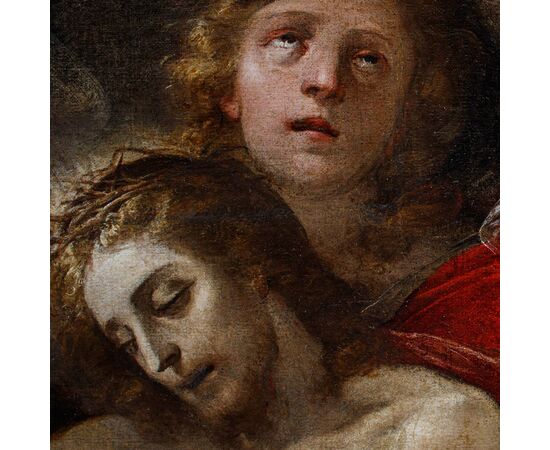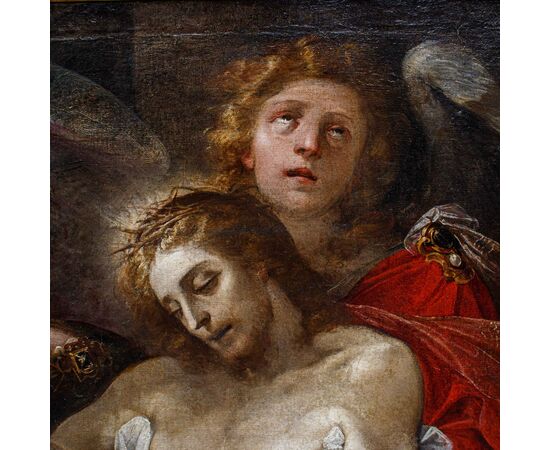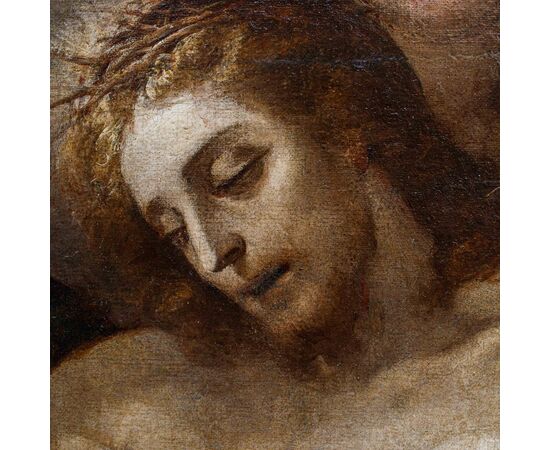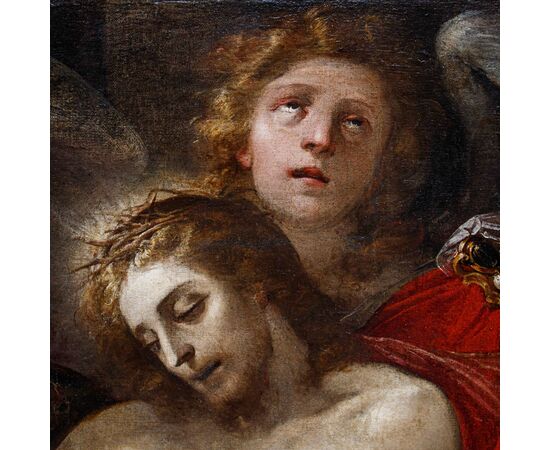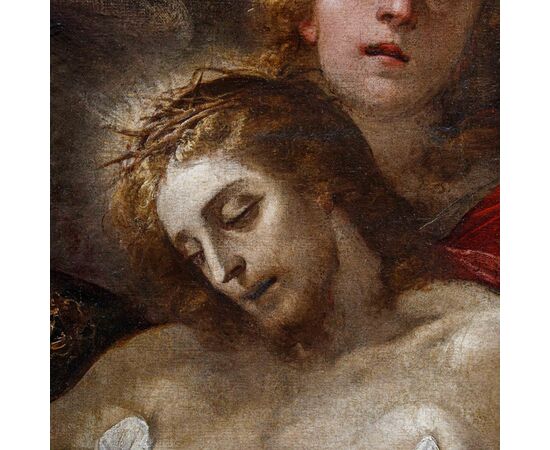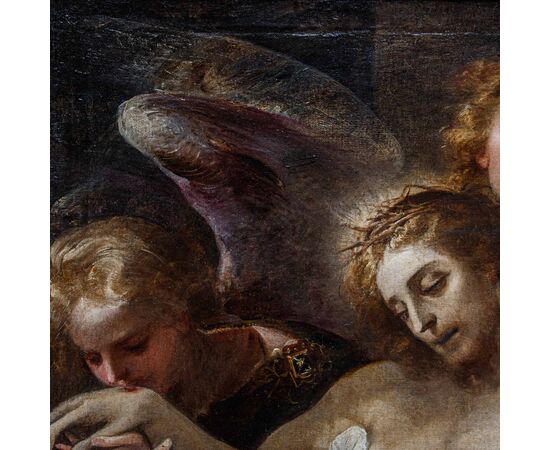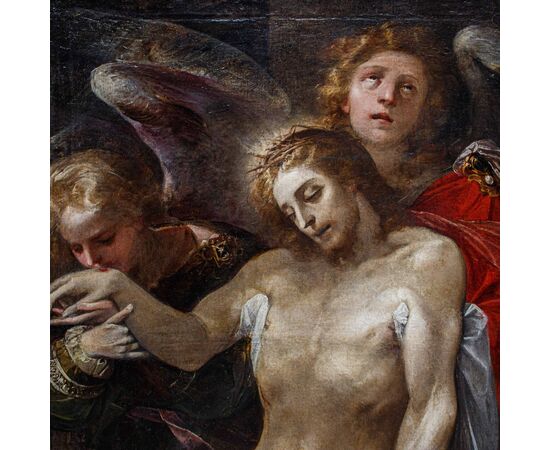Giuseppe Cesari, known as Cavalier d'Arpino (Arpino 1568 – Rome 1640), Dead Christ and Angels
Giuseppe Cesari, known as Cavalier d'Arpino (Arpino 1568 – Rome 1640)
Dead Christ and Angels
Oil on canvas, 92 x 70 cm
With frame, 110 x 88 cm
Expertise by Prof. Alberto Crispo
The compositional and stylistic references connect this painting depicting the Dead Christ supported by angels to the production of the painter Giuseppe Cesari, primarily known as Cavalier d'Arpino (Arpino 1568 – Rome 1640).
The unusual subject of Christ mourned by angels, although not found in biblical texts, falls within the devotional tradition of the Pietà, in which the lifeless body of Christ is held with his bust upright by angels or the mourners. This is a typical iconography of the very fertile second decade of the 17th century, in the height of the Counter-Reformation. The pathetic theme of Christ's death perfectly responds, in its emotional potential, to the aims of the post-Tridentine Church. The typology of the dead Christ supported by angels is configured, compared to Renaissance examples, as a thematic novelty dating back to Taddeo Zuccaro, destined to become very popular in the 17th century. It is no longer men but the angels of Heaven who weep and adore the Son of God sacrificed for humanity; neither the Virgin nor the pious women nor Joseph of Arimathea appear, as if only Heaven could worthily mourn his death.
In the present work, the focus of the composition is the livid body in pity of the Savior, still wrapped in the shroud and with his head completely abandoned, supported by two angels wearing precious tunics; of particular value are its pins adorned with precious gems and the fine embroidery placed on the sleeve of the angel on the left. One of the two kisses the redeemer's hand while the other turns his eyes to heaven.
As written above, the present painting is, as stated by Prof. Alberto Crispo, to be attributed to the hand of Giuseppe Cesari, known as Cavalier d'Arpino, one of the most esteemed and celebrated artists of 17th-century Rome.
Born in Arpino in February 1568 to father Munzio, also a painter, he moved to Rome with his mother in 1582. Under the direction of Niccolo Circignani, his first Roman teacher, he worked on the decoration of the Vatican Loggias, the old Swiss Hall and the Palafrenieri Hall. It was in this context that the young Cesari, not yet a knight, distinguished himself for his creativity and skill to the point that already in 1583 he became part of the Academy of San Luca and in 1586 he was welcomed among the Virtuosi of the Pantheon. Following these prestigious memberships, he obtained numerous commissions working for the church of Trinità dei Monti, in Palazzo Santori, in Sant'Anastasio dei Greci. In Naples he was commissioned to decorate the Sancta Sanctorum of the Certosa di San Martino. With the advent to the pontificate of Clement VIII Aldobrandini, Cesari was finally able to consecrate his professional affirmation, becoming one of the most famous and requested painters in Rome, especially for large decorative enterprises. Overwhelmed by the many commissions, he was supported by a workshop based in Torretta, considered one of the most prestigious in Rome; it is here that in the spring of 1596 Michelangelo Merisi, known as Caravaggio, arrived, before the aversion between the two took over. 1599 is the year in which Cesari was elected prince of the Academy of San Luca and obtained the very important commission of the frescoes in the transept of San Giovanni in Laterano. Cesari's economic and social position had now been widely consolidated, and therefore he was finally able to buy a palace in Via del Corso, as well as have his own residence built in his native Arpino, still partially existing; among Cesari's clients, in addition to the rich Capitoline aristocracy, were also Emperor Rudolf II and the kings of Spain and France.
In particular, the painting can be linked to some paintings of the same subject such as the Dead Christ supported by angels of the M. Roy Fisher Fine Art Museum in New York, where an angel is intent on kissing the savior's hand while the face of the other, with eyes pointing towards the sky seems literally traced from our painting. Other references can be found in the specimen of the Cavallini Sgarbi foundation and in a second version that has passed several times in the antique market. Other stylistic references can also be found in the Deposition of Christ with saints of the Cavallini Sgarbi Foundation or in the Capture of Christ in San Carlo ai Catinari.


